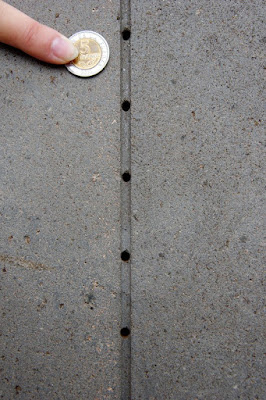Puma Punku in Bolivia is a site shrouded in mystery, both for conventional archaeologists and historians, as well as for those who investigate the idea of advanced prehistoric civilizations or ancient help from extraterrestrial beings. The site covers a large part of the ancient city of Tiwanaku, situated in the Andes, just southeast of Lake Titicaca. The city pre-dates the Inca period in South America.
The precision and complexity of the structures found in Puma Punku is what makes it so mysterious. The doorways and remaining stone blocks are finely cut, and many of them interlock with incredible precision. Astonishingly, there are no chisel marks present on these stones.
According to Jason Yaeger, professor of anthropology at the University of Wisconsin, the city was already abandoned when the Incas conquered the region in 1470. However, the Incas incorporated Puma Punku and the rest of Tiwanaku city into their empire and culture, believing it to be the place where their deity of creation, Viracocha, created the first couples of all ethnic groups and sent them out to populate the world. The Incas transformed these spaces into ‘memory theaters’ and celebrated Tiwanaku as the place where Viracocha created the ancestral people of all ethnicities, thus establishing the ethnic differences that were one of the bases of Inca governance.
The exact origin and age of the site are still disputed. William H. Isbell, an anthropology professor at the University of Illinois, released radiocarbon dating results suggesting that the site was constructed between approximately 500 and 600 A.D. However, others argue that the radiocarbon dating is inaccurate, and the structure may have been built many thousands of years before that.
One of the first modern explorers of the site, Arthur Posnansky, dated Puma Punku to around 15,000 B.C. He used the astronomical alignments of the site’s main temple to date it. On the first day of spring, the sun rises directly above the center of the temple, through a stone archway. The sunrise moves along the horizon as the days of the year pass. Posnansky expected to find the sun rise above cornerstones on either side of the temple on the summer and winter solstices, but found it rose some distance off. However, looking at where the sunrise would have been 17,000 years ago on the solstices, the cornerstones align. Modern archaeologist Neil Steede agrees with Posnansky's claim.
Puma Punku was a terraced earthen mound originally faced with megalithic blocks, each weighing several tens of tons. The red sandstone and andesite stones were cut in such a precise way that they fit perfectly into and lock with each other without using mortar. The technical finesse and precision displayed in these stone blocks is astounding. Not even a razor blade can slide between the rocks. Some of these blocks are finished to 'machine' quality and the holes drilled to perfection. This is supposed to have been achieved by a civilization that had no writing system and was ignorant of the existence of the wheel.
The stonework at Puma Punku remains an enigma, and the level of precision and complexity has left many historians and researchers struggling to explain how it was achieved. It is clear that the site was built with astronomical alignments, but there are differing views on the exact origin and age of the site. Nonetheless, the technical finesse of the stone blocks used in the construction of Puma Punku remains an incredible feat of engineering that continues to fascinate those who visit the site.
Articles you might like:



hair of some sort found inside rock suggests blocks were created on-site, expanding mixture used that turned solid.
ReplyDeleteYou believe the mixture was a cold or hot process?
Delete